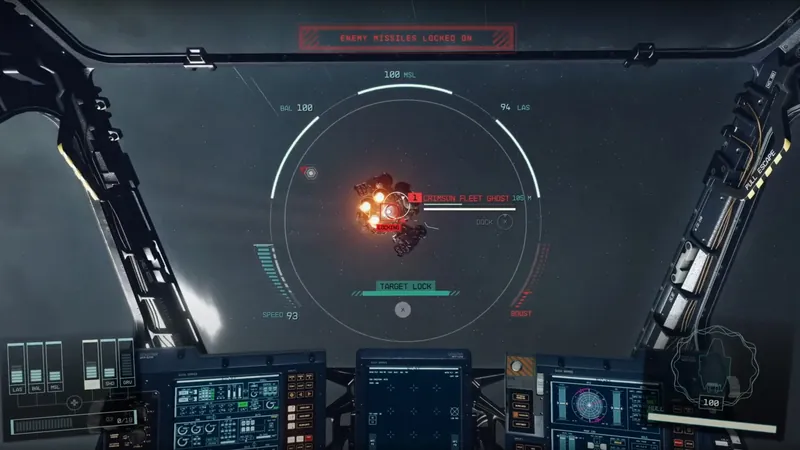
Navigating the Cosmos: How 'Starfield' Creates Engaging Space Combat Without Losing Fun
2025-09-06
Author: Wei Ling
The Epic Dilemma: Realism vs. Arcade Excitement
In the realm of space flight simulation games, developers face a pivotal choice: should they aim for hyper-realism or lean into arcade-style excitement? With titles like 'Elite Dangerous' embracing strict realism, and others like 'Everspace 2' offering exhilarating action, the genre presents a vast spectrum.
At the heart of this debate lies 'Starfield,' Bethesda's much-anticipated space opera, which finds a sweet spot between intricate simulation and thrilling arcade action. Lead Creative Producer, Tim Lamb, shared insights on striking that delicate balance.
A Legacy Rooted in RPG Mechanics
According to Lamb, the development team prioritized crafting a rich RPG experience, infusing depth into space combat. "Our goal was to layer complexity into ship systems from the outset," he explained, outlining the evolution of ideas from basic mechanics to more refined controls.
The game incorporates essential elements like power allocation, multiple weapon types, and advanced maneuvering. But beyond the mechanics lies the challenge of balancing difficulty while enhancing player growth through interconnected ship capabilities.
Creating Intense Dogfights
Testing played a critical role in refining gameplay. The developers constructed a custom sandbox to experiment with flight dynamics amid asteroid clusters. This innovative environment birthed a lively thruster mechanic that allowed players to engage in arcade-like drifting, adding an exciting layer to dogfighting.
Equal Systems for All Fighters
While players enjoy immense control, ensuring enemy pilots operated under similar rules was paramount. The balance of combat mechanics was crucial to create a level playing field, avoiding scenarios where NPCs appeared to have unfair advantages.
Adjustments were made regarding how enemies engaged in combat, with careful tuning to combat speed and accuracy, leaning more towards cinematic dynamics rather than strict realism.
User Interface: The Key to Clarity
Equally important was the user interface (UI), designed to convey crucial information without overwhelming players during chaotic dogfights. Lamb emphasized the need for a clean design that clearly indicates target information, damage status, and other vital metrics.
Additionally, 'Starfield' allows players to target specific enemy subsystems, adding tactical depth while enhancing the cinematic feel.
Prioritizing Fun in Design
As development progressed, the focus shifted from balancing realism with arcade action to ensuring that 'Starfield' delivered a compelling RPG experience. Lamb noted, "At its core, Starfield is about choice, skills, and making combat enjoyable without relying solely on player dexterity. We looked to our favorite films for inspiration in creating a thrilling experience."
The overarching aim remained clear: to make fun the guiding principle in designing space combat.
"Finding the fun was always our guiding star as we built out space combat," Lamb concluded, reflecting on an iterative process that shapes the future of 'Starfield.'



 Brasil (PT)
Brasil (PT)
 Canada (EN)
Canada (EN)
 Chile (ES)
Chile (ES)
 Česko (CS)
Česko (CS)
 대한민국 (KO)
대한민국 (KO)
 España (ES)
España (ES)
 France (FR)
France (FR)
 Hong Kong (EN)
Hong Kong (EN)
 Italia (IT)
Italia (IT)
 日本 (JA)
日本 (JA)
 Magyarország (HU)
Magyarország (HU)
 Norge (NO)
Norge (NO)
 Polska (PL)
Polska (PL)
 Schweiz (DE)
Schweiz (DE)
 Singapore (EN)
Singapore (EN)
 Sverige (SV)
Sverige (SV)
 Suomi (FI)
Suomi (FI)
 Türkiye (TR)
Türkiye (TR)
 الإمارات العربية المتحدة (AR)
الإمارات العربية المتحدة (AR)